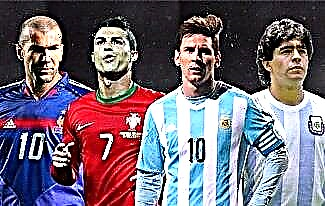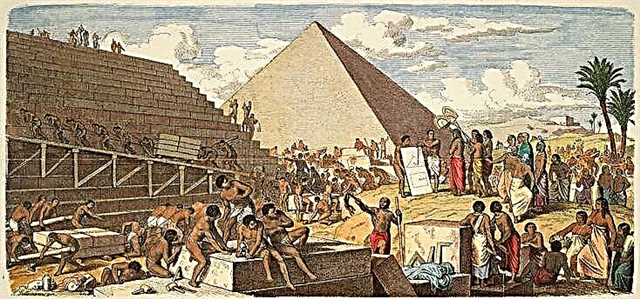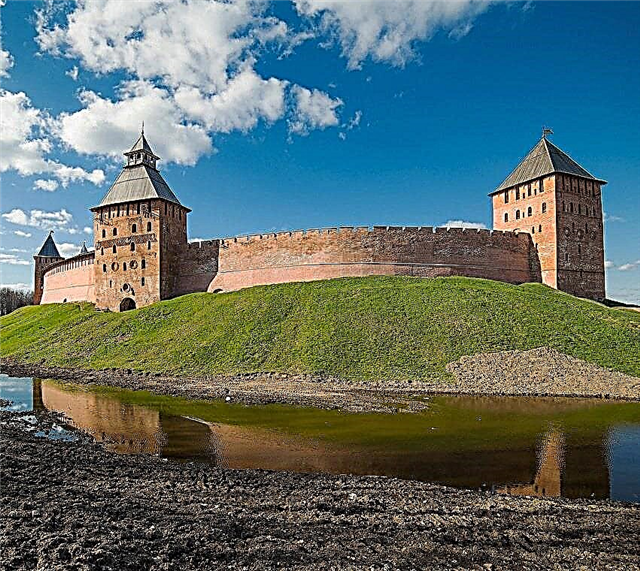The Venetian Republic was in many ways a unique state. The state did without the monarchy, and without the predominant influence of the church on state affairs. In Venice, legality was supported in every possible way - historians even put Venetian justice over ancient one. It seemed that with every new war, with every conflict in Europe and Asia, Venice would only get richer. However, with the emergence of national states, wealth and the ability to diplomatic maneuvering ceased to be the determining factors in wars. The sea route to Asia, Turkish bayonets and cannons undermined the power of Venice, and Napoleon took it into his hands as ownerless property - from time to time the soldiers must be allowed to plunder.
1. In Venice in the cathedral of the same name are kept the relics of St. Mark. The body of one of the evangelists, who died in 63, in the 9th century, miraculously, covered with pork carcasses, was able to take out the Venetian merchants from Alexandria captured by the Saracens.

On the coat of arms of the Venetian Republic was the symbol of its patron Saint Mark - a winged lion
2. The Venetians do not trace their history since antiquity. Yes, there was a powerful Roman city of Aquileia on the territory of today's Venice. However, Venice itself was founded in 421, and the last inhabitants of Aquileia fled to it, fleeing the barbarians, in 452. Thus, it is now officially believed that Venice was founded on Annunciation Day, March 25, 421. At the same time, the name of the city appeared only in the 13th century, before that the whole province was called so (because of the Veneti who once lived here).
3. For security reasons, the first Venetians settled exclusively on the islands in the lagoon. They caught fish and evaporated salt. With the increase in the number of residents, there was a need for a coastal settlement, because all materials and products had to be purchased on the mainland. But on land, the Venetians were built as close to the water as possible, placing houses on stilts. It was this settlement that became the key to the further power of Venice - in order to capture the expanding settlement, both a land army and a navy were needed. Potential invaders did not have such a combination.
4. An important stage in the development of Venice was the emergence of a fleet, first fishing, then coastal, and then sea. The ships formally belonged to private owners, but on occasion they quickly united. A composite Venetian fleet in the middle of the 6th century helped the Byzantine emperor Justinian to defeat the Ostrogoths. Venice and its ships received major privileges. The city has taken another step towards power.

5. Venice was ruled by the doji. The first of them, apparently, were the governors of Byzantium, but then the elective position became supreme in the state. The doge's system of government lasted a whole millennium.
6. Venice gained its actual independence at the beginning of the 9th century, when the empire of Charlemagne and Byzantium signed a peace treaty. Venice finally separated from the Italian strife and gained independence. At first, the Venetians didn't really know what to do with it. The state was shaken by civil strife, the doji periodically tried to usurp power, for which not one of them paid with his life. Outside enemies did not sleep either. It took the Venetians almost 200 years to consolidate.
7. At the end of the first millennium, Pietro Orseolo II was elected as the Doge. The 26th doge explained to the Venetians the importance of trade, defeated numerous pirates, pushed aside the land borders of Venice and entered into a very lucrative agreement with the Byzantines - customs duties for merchants from Venice were reduced seven times.

Pietro Orseolo II with his wife
8. Fortified Venice took an active part in the Crusades. True, the participation was peculiar - the Venetians received payment for the transportation of the crusaders and a share in possible booty, but they participated in hostilities only at sea. After three campaigns, the Venetians got at their disposal a quarter in Jerusalem, tax-free status and extraterritoriality in the Kingdom of Jerusalem, and a third of the city of Tire.
9. The fourth crusade and the participation of the Venetians in it stand apart. For the first time, the Venetians deployed a ground force. Their doge Enrico Dandolo agreed to take the knights to Asia for 20 tons of silver. The crusaders obviously did not have such money. They expected to receive them in the form of war booty. Therefore, it was not difficult for Dandolo to persuade the not particularly resisting leaders of the campaign not to go with vague chances of success to hot Asia, but to capture Constantinople (this is after the Byzantines were the “roof” of Venice for 400 years, having almost nothing in return). The capital of Byzantium was plundered and destroyed, the state practically ceased to exist. But Venice received gigantic territories from the Black Sea to Crete, becoming a powerful colonial empire. The debt from the crusaders was received with interest. The country of merchants became the main beneficiary of the Fourth Crusade.

10. For 150 years, two Italian trading republics - Venice and Genoa - fought among themselves. The wars went on with varying degrees of success. In boxing terms, in terms of points from a military point of view, in the end, Genoa won, but globally, Venice gained more benefits.
11. An analysis of the geopolitical situation in the Mediterranean in the 12th and 15th centuries shows a striking similarity between the position of Venice and Germany in the late 1930s. Yes, the Venetians seized enormous wealth and territory. But at the same time, they remained face to face with an incomparably powerful Ottoman power (Russia in the 20th century), and in their rear they had Genoa and other countries (England and the USA), ready to take advantage of the slightest weakness. As a result of the Turkish wars and the attacks of its neighbors, the Venetian Republic was bled white and Napoleon did not have to make serious efforts to conquer it at the end of the 18th.
12. It wasn't just military failures that crippled Venice. Until the end of the 15th century, the Venetians almost exclusively traded with all the eastern countries, and already from the pearl of the Adriatic, spices and others spread throughout Europe. But after the opening of the sea route from Asia, the monopoly position of the Venetian merchants came to an end. Already in 1515, it became more profitable for the Venetians themselves to buy spices in Portugal than to send caravans to Asia for them.
13. There is no money - no more fleet. At first, Venice stopped building their own ships and began to buy them in other countries. Then there was only enough money for freight.
14. The greed gradually spread to other industries. Venetian glass, velvet and silk gradually lost their positions partly due to the loss of sales markets, partly due to a decrease in the circulation of money and goods within the republic.
15. At the same time, the outward decline was invisible. Venice remained the European capital of luxury. Great festivals and carnivals were held. Dozens of luxurious gambling houses were operating (in Europe at that time a strict ban was imposed on gambling). In seven theaters in Venice, the then stars of music and stage continuously performed. The Senate of the Republic tried in every possible way to attract rich people to the city, but the money to maintain luxury became less and less. And when on May 12, 1797, the Great Council abolished the republic by an overwhelming majority of votes, this did not bother anyone too much - the state that had existed for more than a thousand years became obsolete.










